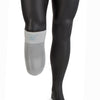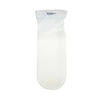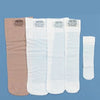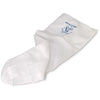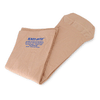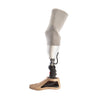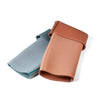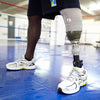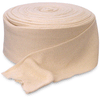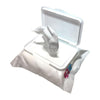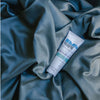Outsmart Sweat: How to Get Your Perspiration Under Control
Being extra sweaty (at least for a while) is part of the deal if you've had an amputation. For a number of reasons, amputees sweat more than average, and for someone who wears a prosthesis it's more than just annoying. Excessive sweating can create a very unhygienic environment within your prosthetic socket, and that can lead to discomfort and skin disorders. Fortunately, there are ways to outsmart sweat. Below are some practical strategies for getting through the day with your perspiration in check.
Start with an antiperspirant formulated for amputees.
A must-have product in your skin care routine, antiperspirants for amputees are made to combat and prevent perspiration build-up inside the socket. Antiperspirants are typically spray-on or roll-on, but powders, glides, lotions, creams, and wipes are also an option. It's common to combine treatments in order to better manage your sweat.
The aluminum ingredient in antiperspirants controls sweat by blocking the sweat ducts in the skin; in products made for amputees, the aluminum content is sometimes doubled. (All natural products often don't contain aluminum, making them good for deodorizing, but not for preventing sweat.) Some antiperspirants also contain a deodorant, which moderate how much you smell by killing bacteria. Deodorant sprays, in particular, are often good for neutralizing odor in the prosthetic socket. Powders help control both odor and moisture. Whichever type of antiperspirant you choose, be sure to go with a product that's fragrance free, which will be better for the sensitive skin of your limb.
Dress for sweat control success.
To help your body stay cool, avoid tight or form fitting clothing that won't let cool air reach your skin. Opt instead for lightweight, loose, breathable fabrics, like cotton. A lot of athletic clothing is not only lightweight, it's also designed to wick moisture away from the skin, so it's perfect for everyday use when heavy sweating is an issue. It's a good idea to carry extra clothing with you if you typically sweat profusely. Not only are sweat soaked clothes embarrassing, they can lead to skin irritation if left on for too long. Carrying an extra shirt will allow you to wipe away sweat when you need to, before changing into something fresh. And once you've worn something once, don't recycle it, even once it dries. Wear clean, dry clothes and your skin will thank you. So will your co-workers.
Use sweat control textiles designed for amputees.
Prosthetic sockets trap sweat against the limb, preventing the sweat from evaporating and preventing cool air from reaching the skin. But certain textiles made especially for amputees can be used to counter the degree of moisture inside the prosthesis. Prosthetic sheaths worn under the liner and prosthetic socks made from special sweat-control materials will create a cooling effect by wicking perspiration away from the skin, preventing it from making direct contact.
Freshen up throughout the day.
Remove your prosthesis for a few minutes halfway through your day to clean the socket and your limb and give your skin time to breathe. Cleaning out your socket and prosthetic liner periodically will reduce perspiration build up, making it less likely for you to suffer abrasions. Wear clean prosthetic socks after you clean your limb, prosthetic socket and gel liner.
Bring out the big guns.
For severe sweaters, your physician may suggest a medical procedure that can help, like botox injections that block sweat glands, or non-invasive surgeries that safely eliminate sweat glands altogether.














































